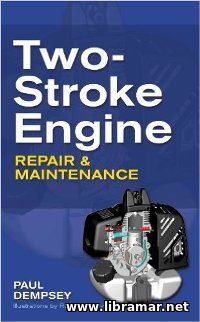 This nice textbook dedicated to the two-stroke engines was specifically prepared by the long-time professional mechanic and one of the world-popular and best-selling authors Paul Dempsey, who tried to provide all interested readers including mechanics, maintenance team members, operators and students with the good reference source that would show them how to fix the diesel engines.
The text part of this publication is supplemented with the numerous detailed drawings and sketches, schemes and images along with the easily understandable instructions making it much easier to get any job related to the engines done quicker. The readers will get a proper and thorough understanding on how to perform the troubleshooting of these engines, in order to be able to determine the source of any problem that may occur, how to conduct the repair works on the magnetos and solid state systems, and how to properly adjust/repair the associated equipment.
There are valuable instructions on fabrication of the crankcase pressure testers, rewinding stators of any type, working with the chains, v-belts, clutches and converters of torque. The tips on the overhauling of such engines including replacement of the crankshaft seals, pistons, rings and main bearings are also there readily available for the interested readers...
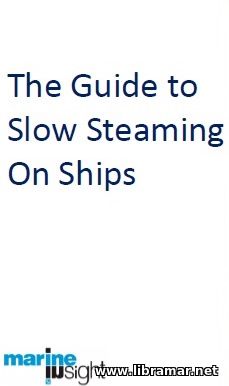 Generally speaking, slow steaming is a process of deliberately reducing the ship's speed with the purpose of cutting down fuel oil consumption as well as carbon emissions to the atmosphere. This Guide prepared by MarineInsight team is aimed to help the marine engineers and actually all persons who are dealing with the engine part of the vessel.
Its chapters tell the readers what exactly the slow steaming is and what its benefits are, provides some brief history, explain why marine engineers are concerned, show how to test the main engines for slow steaming, describes the process of optimization of the marine diesel engines, and different types of slow steaming having to perform the modification of the engine itself.
In addition, precautions and checks for slow steaming are provided at the end of the book, together with the list of additional references. This publication will be very useful to marine engineers since it is completely dedicated to the slow steaming, and you know there are not too many publications that would address the same matter available today.
Subject technique has been already adopted by numerous shipping companies doing their best to survive in the today's conditions of rising fuel oil costs and financial recession making all participants of the shipping industry pay greater attention to the effectiveness and cost saving.
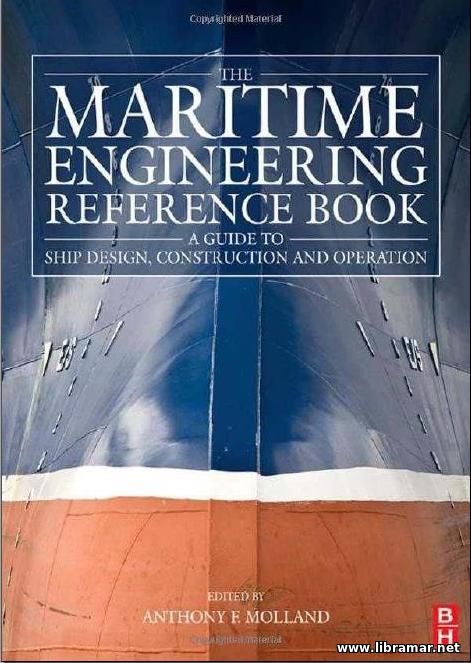 A great one-stop essential reference source designed and released for the engineers who are involved in the fields of naval architecture/marine engineering. In his publication, the author brought together the valuable inputs done by a number of the world recognized industry experts in order to prepare an inclusive volume aimed to a very wide audience made of the marine engineers and naval architects as well as all other people involved in various operations, related to this field.
The book covers the key aspects of ship design, construction and further operation - for example, stability and flotation of the vessel, ship strength, ship structures, vessel propulsion, seakeeping, ship handling and maneuvering and all other areas considered important. It explores the maritime safety as well as all matters of the marine environment protection.
Moreover, the new technologies have also been dealt with in the pages of this reference book - it covers the construction and operation of the ROVs (i.e. remotely operated vehicles) that are nowadays used for the underwater inspection of the structures, and also the application of the computer systems in the ship design process. It provides a remarkably comprehensive technical overview made by the best-selling and popular authors and addresses the key facts and figures.
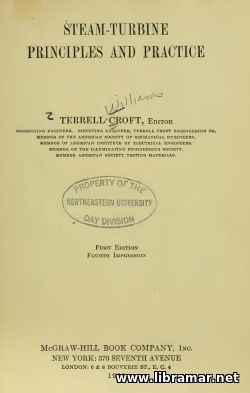 The recent adoption of steam turbine technology has been very rapid and is of truly great importance to the industry. Nowadays, the steam turbines are widely used and have proven effective. The present publication was prepared specifically for the practical technical specialists in order to furnish them all with the required information; it is actually intended to give the operating engineers, managers and superintendents with the guidance they would need to satisfactorily perform their everyday work.
The main aim of the author was to cover the topics related to the general classes of steam turbines, namely those where the specialist has to be familiar in order to insure economic and, of course, safe operation of the steam turbines, and those a thorough understanding of which will be required for the specialist to make a proper choice when dealing with the ordering of the equipment. Some of the theoretical information is given in the book, to let readers get a sound technical understanding of the general principles of operation of the steam turbines.
Note that the book does not address the design of the steam turbines. The readers are not expected to have a serious technical or scientific background but some working knowledge of the mathematics would be required.
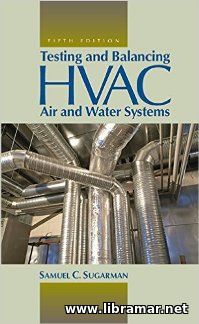 This content of the present volume is mainly based on the field and teaching experience of the author in testing of the various types of HVAC systems, their balancing, design and evaluation. There are two basic methods of balancing. One method is balancing from the terminals back to the fan or pump.
This method is proportional balancing. It was during a job at a nuclear power plant many years ago that I first started using the proportional method that I have outlined in this text. As we could not get enough experienced balancing technicians for the project, I began instructing sheet metal mechanics with little or no balancing background in proportional balancing. I found that the proportional method was quickly learned in a classroom setting and then applied to the field.
The proportional method follows a scientific approach with quite predictable results, it also establishes a starting point and allows others with proportional balancing experience to take over the balancing when there is a need for that, large systems are balanced quicker, and the least resistance is imposed on the system while delivering air or water to the terminals at design or at the highest possible flow quantities... The author has continued to teach the presented method in his classes, seminars and in-house training programs and now with the СТАВ program with great success...
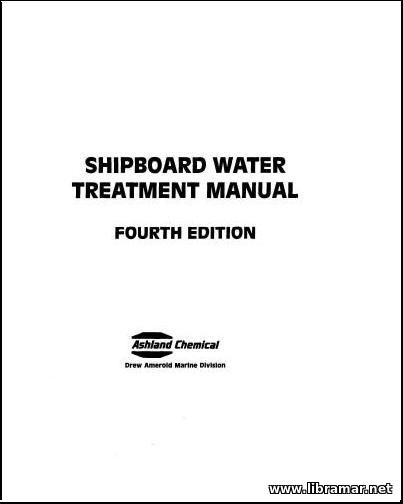 This manual has been mainly intended to be used by the personnel concerned with the chemical testing as well as dosing and control of a shipboard water treatment. It includes technical explanations of why exactly the water treatment is always considered necessary and descriptions of various methods that are used in the modern marine practice.
The book also explains the purpose and proper application of each chemical. Note that the present edition of the publication has been significantly updated in order to include the latest tests and treatments. Today, the power plants installed on board of the modern marine vessels are considerably more efficient than they used to be.
The diesel engines and marine boilers are usually built with the main intention to get the maximum possible energy from the fuel and to turn subject energy into work. Moreover, the electrical generators and turbines plus all auxiliary equipment are designed to provide the max effective utilization of the mechanical or steam energy supplied to them.
The effectiveness of the shipboard power plant operation would mainly be dependent on the quality of the received water. In the meantime it shall be taken into account that various contaminants could cause serious damage to the power plant equipment.
 The present official supplementary reference document was specifically prepared and officially released by the specialists of the world respected Electro Static Technology ITW and is primarily dedicated to the VFD, standing for the variable frequency drives. When the PWM VFD, i.e. pulse width modulation drives were developed using IGBTs, i.e. the insulated gate bipolar transistors, this advanced and newly presented technology was first applied to controlling electric induction motors in both commercial and industrial applications.
The advantages were obvious: Torque and motor speed could now be precisely controlled to optimize both process and energy requirements, The potential to save energy by operating motors at only the required speed and, at the same time, maintaining applicable torque requirements would potentially result in a 20% to 50% energy savings, Processes can be optimized and controlled by computer processing systems to achieve productivity increases or energy savings.
Nowadays, the use of these variable frequency drives is slowly getting increasingly common when making attempts to save the energy in HVAC systems and to reduce the associated energy costs. When using the VFD technology, please note as necessary that this type of motors shall always have the bearing protection in order to ensure reliability and safe operation.
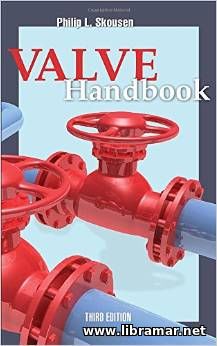 This is the third edition of the popular and remarkably comprehensive Valve Handbook significantly revised in order to include the details of the recent technological advances and discuss the design and performance-related issues, selection of the valves, their operation and practical applications.
This reference source has been updated and now includes a completely new chapter dedicated to the green technology that is currently being employed by the industry, and also to provide better overview of the key environmental standards expected to be met by the process plants. This publication contains new useful information on valves that are is use in the waste water industry, covers the application of the ESO valves designed to the emergency shutting down, some attention has been paid to the valves specifically designed to be used in the nuclear industry, and to the procurement process for the N-stamp.
The latest changes that occurred in the shutoff classifications have also been dealt with, together with the application of the wireless technologies to current smart tech. In addition, note that among the topics covered within this edition of the handbook there are criteria for selection of valves, problems commonly faced with the valves, manual actuators, smart positioners and so many others.
« 1 2 ... 12 13 14 15 16 ... 19 20 » |







